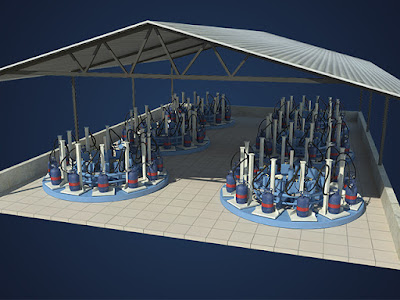In engineering applications, there are various needs of moderating high volumes, pressures, and temperatures. A ball valve is useful in achieving the same. It can effectively and efficiently perform the functionality.
Because of its simplicity of design, the ball valve is incredibly easy to install, use, and repair. Based on functionality specifications, ball valve manufacturers in India supply a wide range of valves across industries.
Strict quality guidelines are followed to ensure high performance.
The composition
In a ball valve, a ball is used to start or stop the flow of liquid or gas through rotational motion. It is a low-maintenance component. A ball valve is compact as compared to other types of valves.
The ball valve is composed of two parts; the outer portion and the ball.
The outer portion is called the ‘valve body’. The ball is in the center of it with a port to direct the flow.
When the ball is in the closed position, a set of rounded seats acts as the seal.
A level-style handle regulates the flow of content. By changing the position of this handle, the position of the ball can be turned.
When the valve is positioned such that the bore is aligned to the direction of the pipeline, the fluid or gas can flow through. When rotated 90 degrees, the valve closes, and the fluid can’t pass through.
Since it offers tight sealing with low torque, the ball valve is quite popular. Both carbon steel and stainless-steel valves are available in full bore and reduced bore types.
Teflon seals enhance the quality of the valve. The dimension of the ball valve ranges from 1cm to 15cm.
High precision is followed while manufacturing ball valves.
In industrial and commercial applications worldwide, the demand for ball valves is high.
The benefits
What is the biggest quality of a ball valve? If the valve fails, then it is not required to remove the valve from the line. Hence, it is considered ideal for typical ‘closed line’ systems, e.g., lines containing corrosive fluids, hazardous chemicals or oil and gas pipelines, or hydraulic applications.
Based on the use and applications, a variety of materials are used for making ball valves. A few examples are brass, stainless steel, and even PVC.
One should give production process details and requirement specifications to ball valve suppliers so that they can suggest the appropriate valve type.
- Ball valves are corrosion resistant. Hence, they remain unaffected by the production environment.
- They meet fire and antistatic guidelines mentioned in API 607.
- They are available in full bore and reduced bore varieties.
- Reputed ball valve suppliers meet international practices and standards, and the designs are as per BS_5351 confirmation.
- When you order ball valves from the leading manufacturers and suppliers, you need not be worried about the quality of it.
- Whether it is a standard product or a custom-design valve with a special configuration, the performance will be flawless.
Ball valves are in great demand
Ball valve manufacturers in India not only cater to the needs of domestic clients but supply material to overseas buyers as well.
Valves made in India are admired for their superior quality across the world. Many countries in Europe and America import ball valves from Indian manufacturers.
Ball valve suppliers are well aware of the needs of the users and the industry.
Therefore, they make products that fulfill the needs of users without overlooking safety standards. Ball valves are made with a blowout-proof design, and they are fire-safe and corrosion-resistant.
A reputed and trusted ball valve manufacturer produces quality products that are used in a wide range of commercial and industrial applications.








